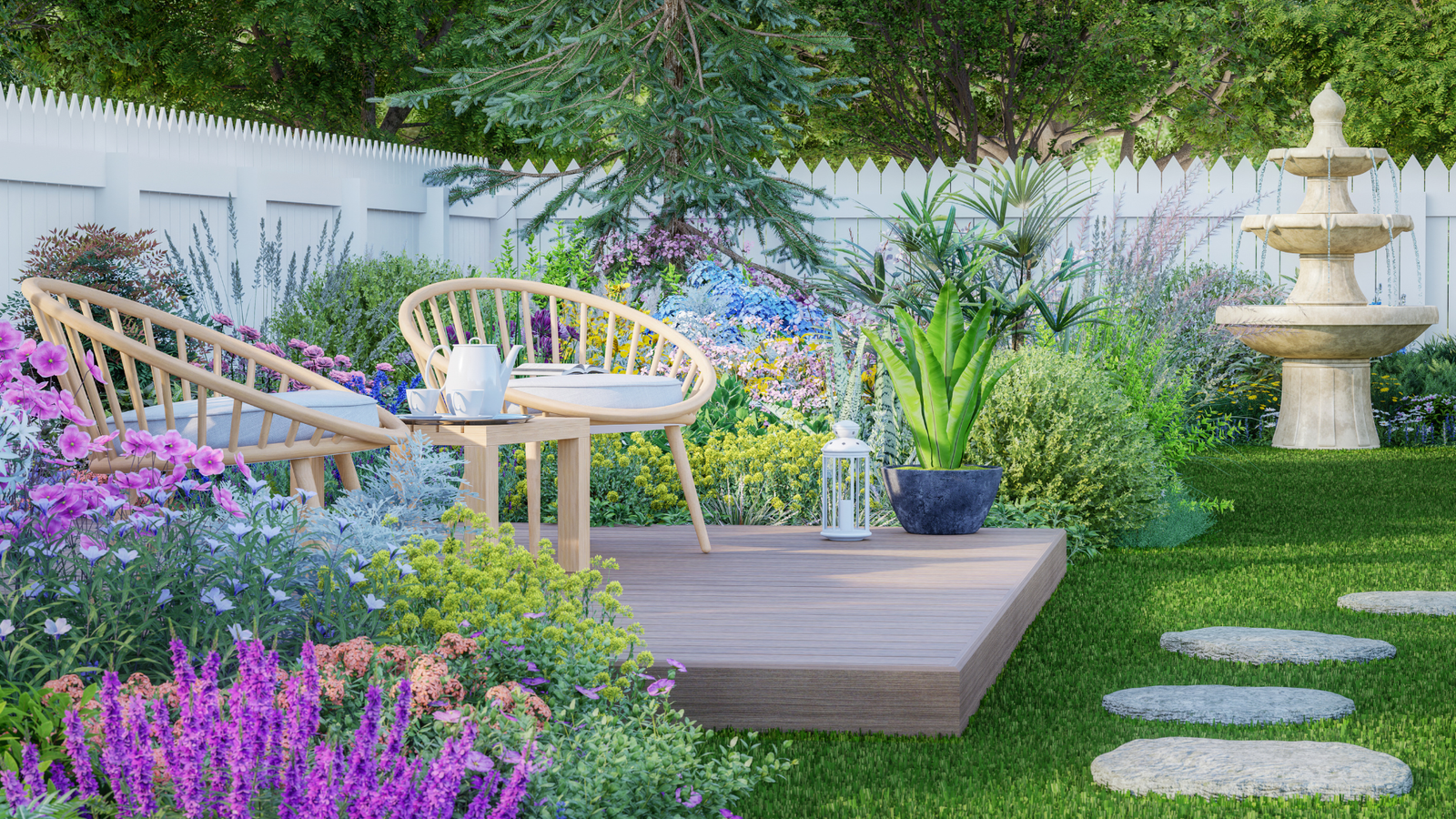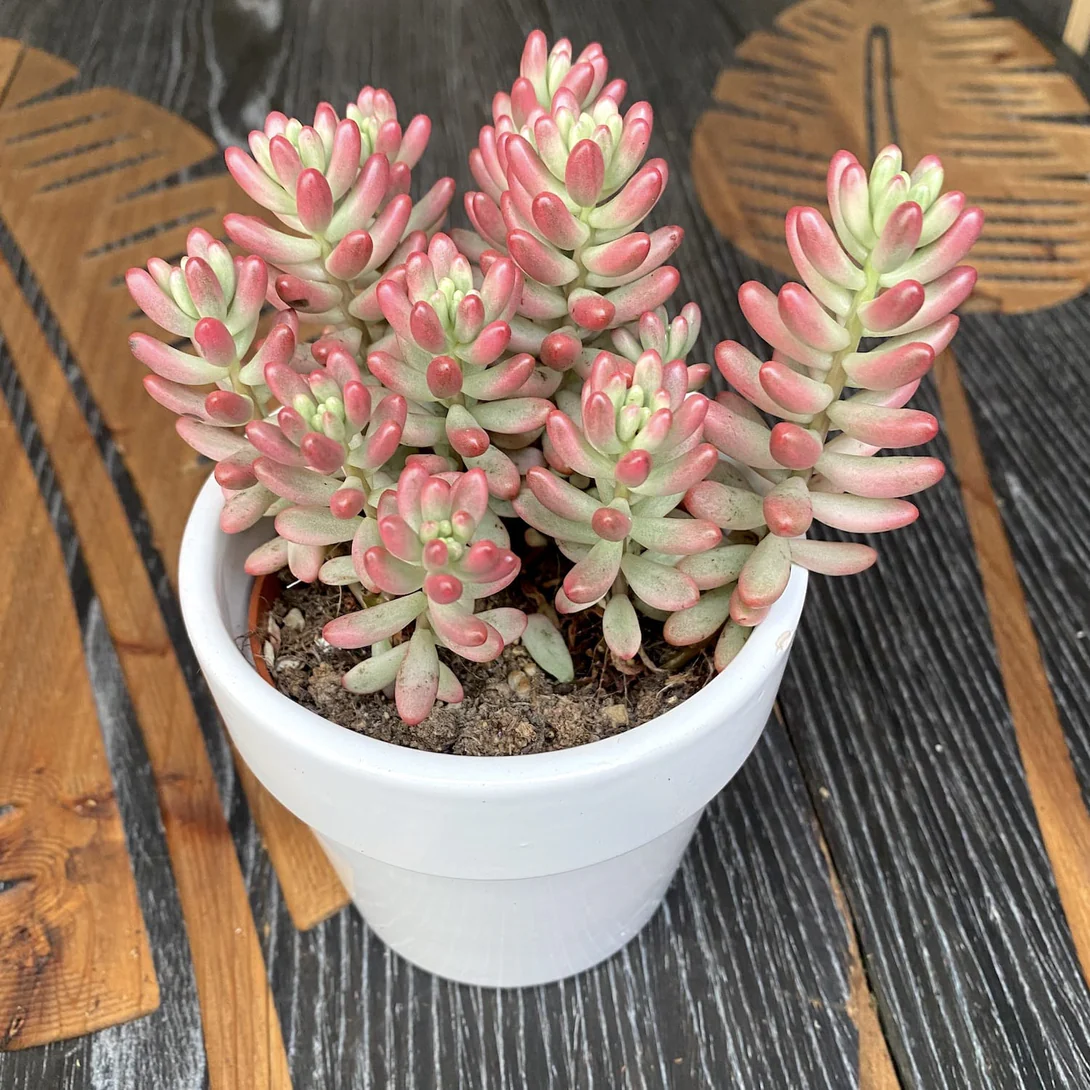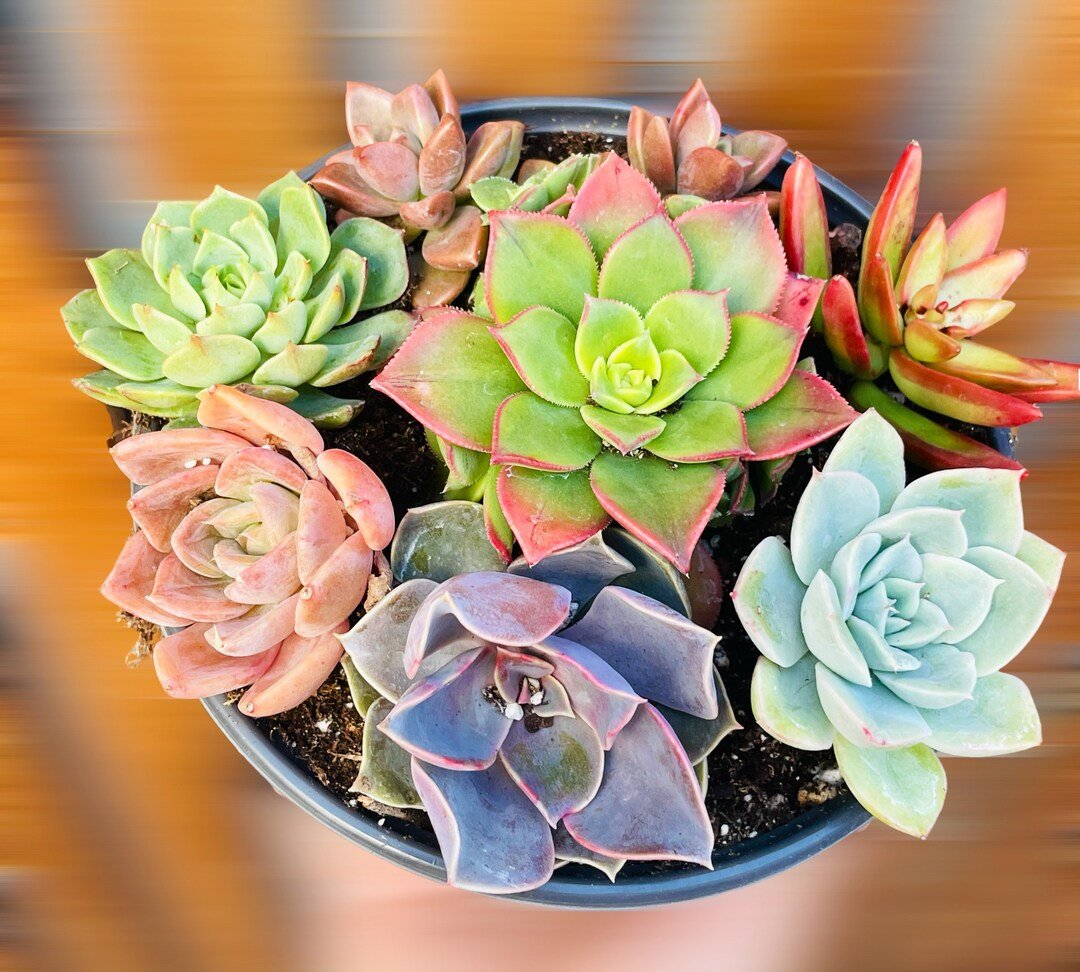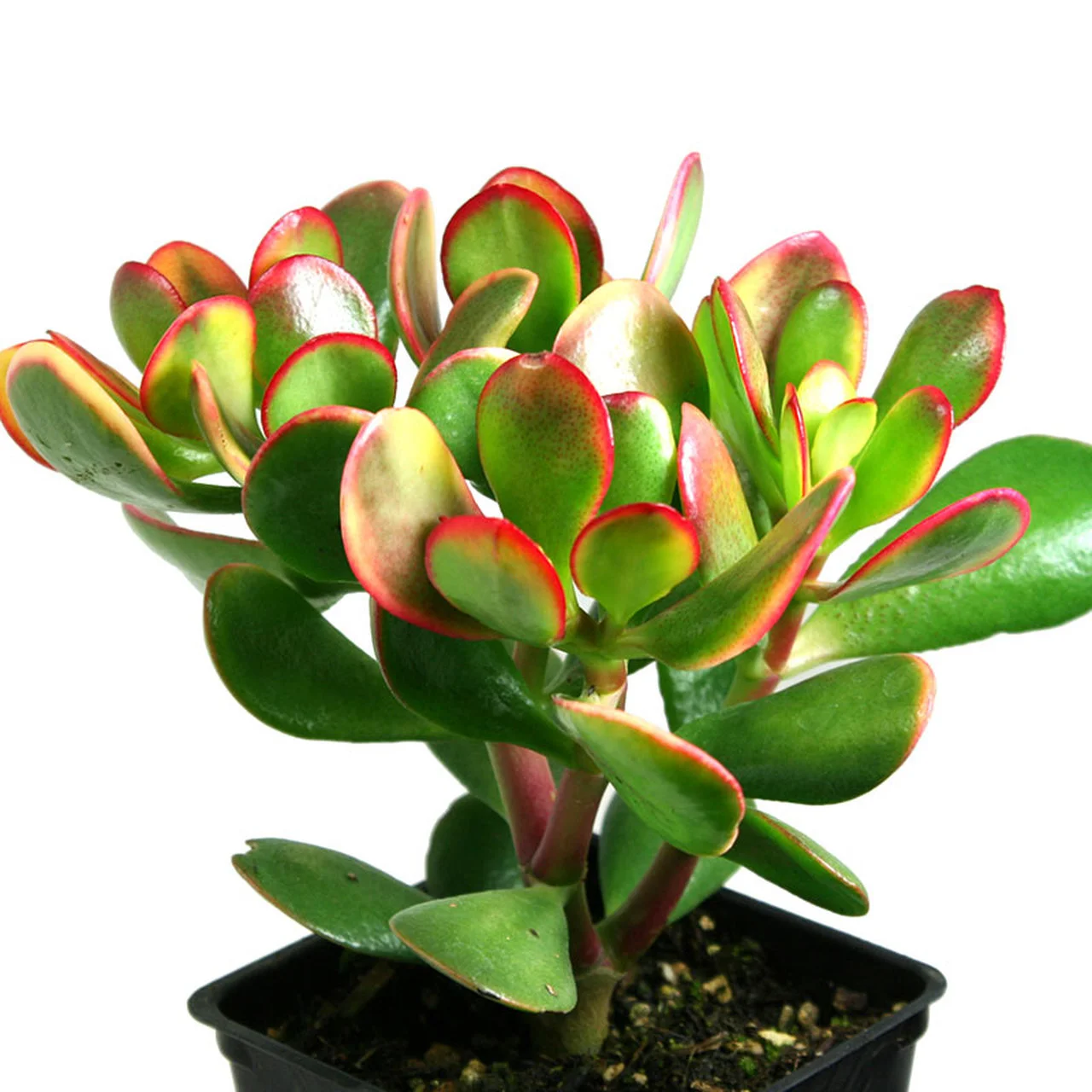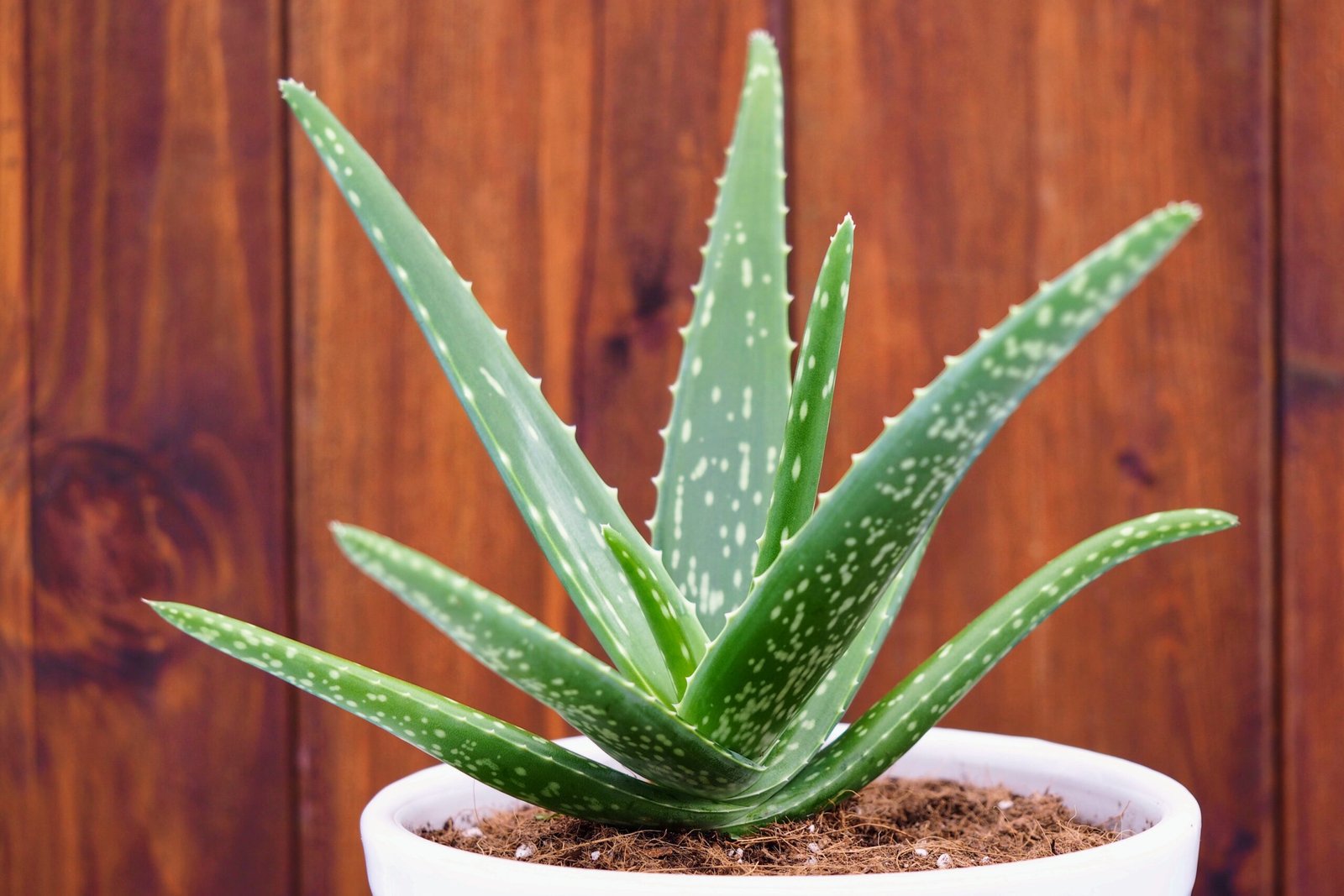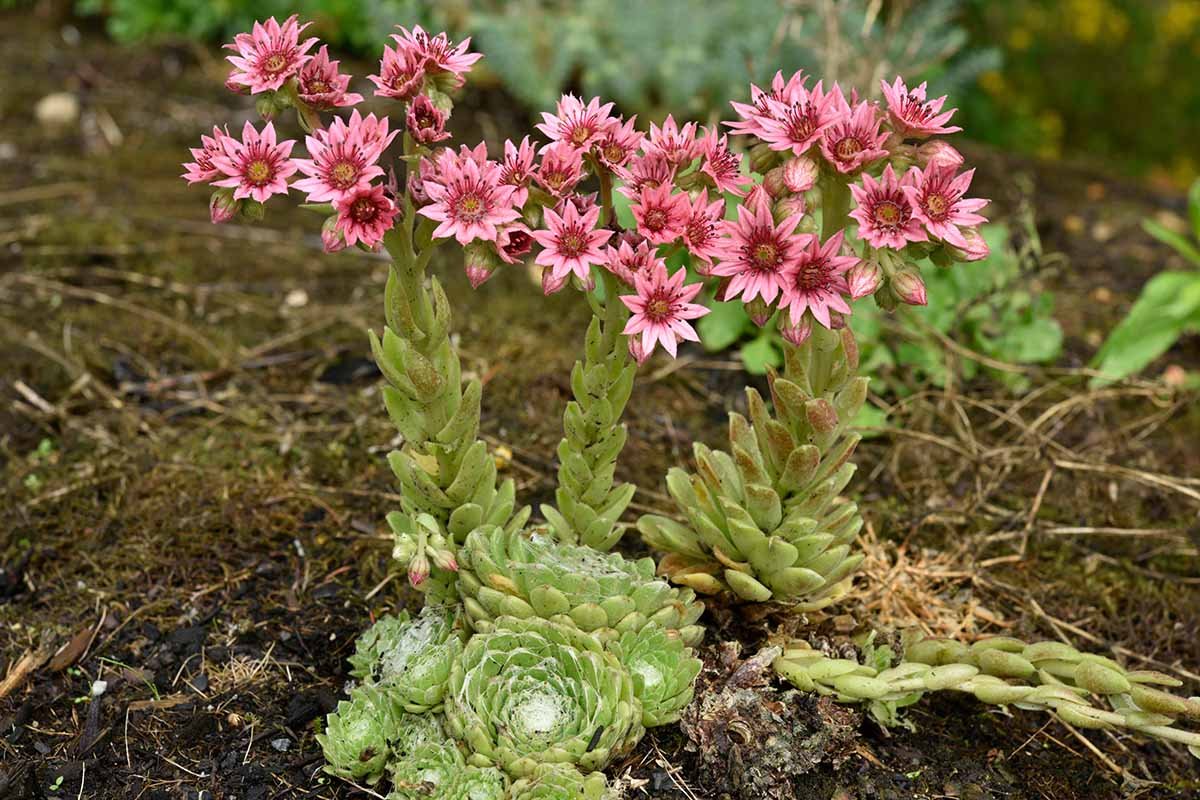Sustainable gardening has gained popularity in recent years, and succulents are right at the heart of this movement.
Whether you live in a city apartment or a sunny backyard oasis, eco-friendly succulent gardening ideas can help you grow beautiful plants while reducing waste, conserving water, and being kind to the environment.
This guide is perfect for beginners and enthusiasts alike who want to build a greener garden, one low-maintenance plant at a time.
Succulents already have a lot going for them: they require little water, thrive in small spaces, and are generally pest-resistant.
But you can take your plant care a step further with sustainable practices—from choosing eco-conscious containers to using compostable soil blends.Ready to green your thumb even more?
Why Succulents Are Perfect for Sustainable Gardening
Succulents naturally support eco-conscious habits. They store water in their leaves, meaning less frequent watering and lower water bills.
These plants also require minimal fertilizer and can thrive in recycled containers.
Their slow growth and durability make them perfect for sustainable indoor and outdoor gardens.
Low Water Usage
Succulents are drought-tolerant, making them ideal for arid climates or areas where water conservation is a priority.
You can go days—or even weeks—without watering, depending on the climate.
Space-Saving and Versatile
Whether you have a tiny balcony or a sunny windowsill, succulents adapt well to small, reused containers or vertical gardens.
They’re also perfect for urban gardening, where space and resources may be limited.
Choosing Succulents That Support Sustainability
When planning your eco-friendly garden, start with the right plant selection. Choose varieties that are resilient, adaptable, and native to your climate when possible.
Top Eco-Conscious Succulents to Grow
- Sedum: Hardy and tolerant to both heat and cold, sedums require minimal care.
- Echeveria: These rosette-shaped succulents are perfect for container gardens and rarely need repotting.
- Crassula (Jade Plant): A low-maintenance favorite, jade can live for years and even decades.
- Aloe Vera: Besides its soothing gel, aloe requires little water and flourishes in bright light.
- Hens and Chicks (Sempervivum): Great for rock gardens and thrive in poor soil with no fuss.
Native or climate-appropriate succulents are your best bet. They reduce the need for excessive watering, pest control, or soil additives.
Sustainable Containers and Potting Options
Your pot choice plays a huge role in reducing environmental impact. Avoid single-use plastic and opt for biodegradable or upcycled materials instead.
Eco-Friendly Containers to Consider
- Terracotta Pots: Naturally porous and long-lasting.
- Coconut Coir Planters: Biodegradable and great for airflow.
- Recycled Tin Cans: Give used cans a second life with drainage holes.
- Repurposed Glass Jars or Bowls: Ideal for small tabletop arrangements.
- Wooden Boxes: Sustainable and perfect for rustic aesthetics.
Sustainable Soil Choices
- Use a homemade cactus/succulent mix with sand, compost, and perlite or pumice.
- Look for soil mixes labeled organic or peat-free, which reduce environmental degradation.
- Add worm castings for a gentle, natural fertilizer alternative.
Creating a Zero-Waste Succulent Garden
Building a sustainable garden also means cutting down on waste. From composting to reusing old materials, there are plenty of ways to make your succulent setup greener and cleaner.
Start Composting for Succulent Soil
While succulents don’t need nutrient-rich soil, they still benefit from organic matter. Composting your kitchen scraps and garden waste provides a sustainable way to enrich your soil and cut down on landfill contributions.
Great compost materials for succulent gardening:
- Eggshells (crushed finely)
- Coffee grounds (used sparingly)
- Dried leaves or lawn clippings
- Shredded paper (unbleached)
Once fully decomposed, mix a small amount of compost into your succulent potting mix for a gentle nutrient boost.
Repurpose & Reuse Garden Supplies
Instead of buying new items, consider upcycling:
- Old colanders, baskets, or wooden crates make rustic succulent planters.
- Broken ceramic mugs or chipped bowls? Drill a hole and you’ve got a unique pot.
- Wine corks and seashells can be used for miniature succulent cuttings.
This approach not only saves money but also keeps items out of landfills and supports a creative, low-impact gardening habit.
Water-Saving Techniques for Succulent Lovers
Even though succulents are water-efficient, there’s always room for more conservation.
Use Rainwater or Greywater
Harvesting rainwater is one of the most sustainable ways to irrigate your garden. Set up a rain barrel or use simple containers to collect rain from gutters or balconies. You can also use greywater—gently used water from rinsing vegetables or leftover from boiling pasta—so long as it’s free from soaps and chemicals.
Water Deeply, Not Frequently
The trick to healthy succulents is deep watering and letting the soil dry completely between sessions. This mimics their natural desert environment and encourages strong root growth, helping plants become more resilient over time.
Mulching for Moisture Retention
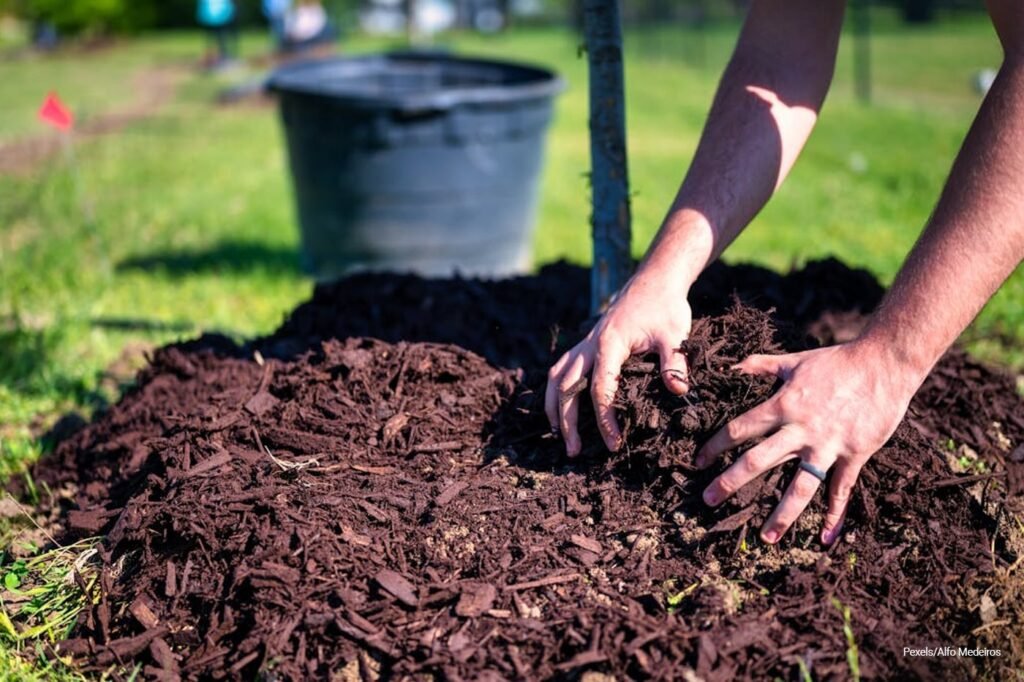
Although not traditional for succulents, light mulching with pebbles, bark chips, or coconut husk can help retain soil moisture and protect roots from heat without holding too much water.
Natural Pest Control Methods
Chemical pesticides can harm beneficial insects and leach into soil and groundwater. For your eco-friendly succulent garden, choose natural and non-toxic pest control methods.
Prevent Common Succulent Pests Like:
- Mealybugs
- Aphids
- Fungus gnats
Eco-Friendly Remedies:
- Spray a mild neem oil solution as a preventative.
- Use a mix of water and a few drops of dish soap to remove pests.
- Introduce beneficial insects like ladybugs if you’re planting outdoors.
- Keep plants clean and dry—pests love moisture and rotting leaves.
Designing a Closed-Loop Succulent Garden
A closed-loop garden recycles its own resources, reducing the need for external inputs. Here’s how to build one with succulents:
- Use self-watering containers or terrariums to recycle moisture.
- Add a layer of charcoal beneath the soil to absorb odors and purify water.
- Reuse plant trimmings for propagation (succulents make this easy!).
- Compost all dried leaves or discarded organic matter for future soil amendments.
By using what you already have, you reduce your carbon footprint and make gardening a more self-sustaining joy.
DIY Upcycled Planter Ideas
Giving old items a new life is one of the most fun and sustainable parts of eco-friendly succulent gardening. Instead of buying new pots, get creative with materials already at home. You’d be surprised how many everyday items can double as charming succulent containers!
Creative and Sustainable Planter Ideas:
1. Tin Cans

Paint them, wrap them in jute rope, or leave them rustic. Just be sure to add small drainage holes at the bottom and layer with gravel.
2. Mason Jars
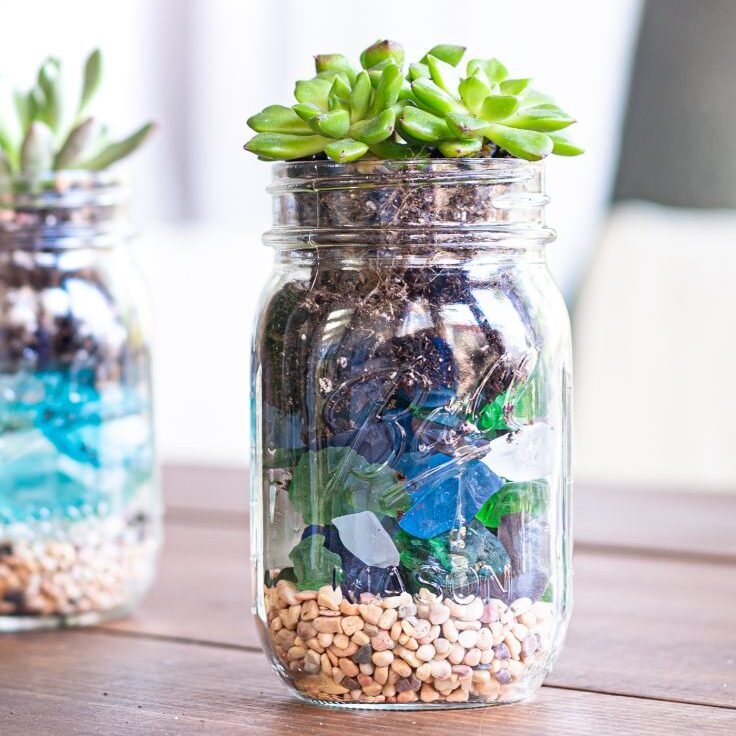
Great for indoor windowsills. Add pebbles or charcoal at the base for moisture control.
3. Wine Corks
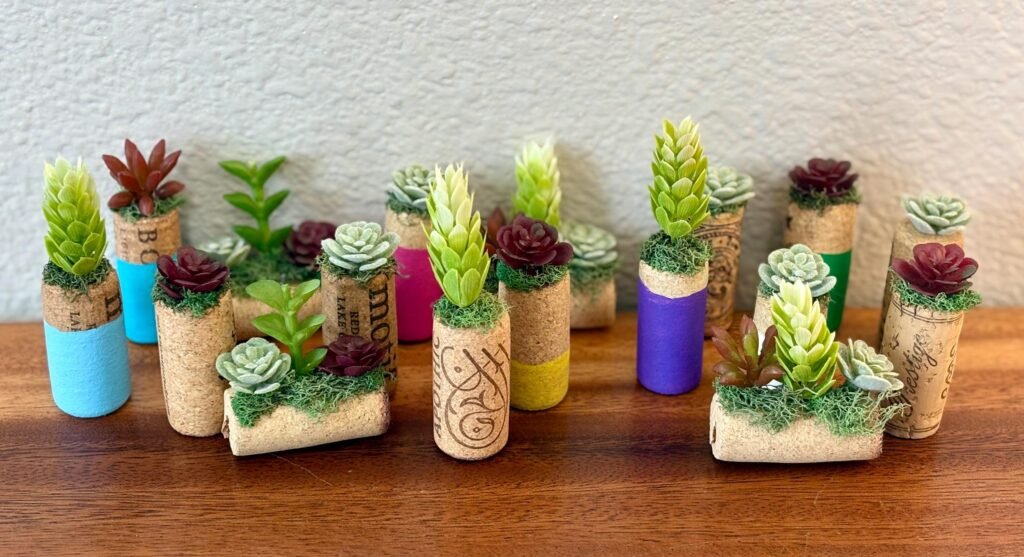
Make adorable mini succulent magnets. Hollow out a small section, add soil and a cutting—perfect for fridge decor or gifts.
4. Broken Ceramics
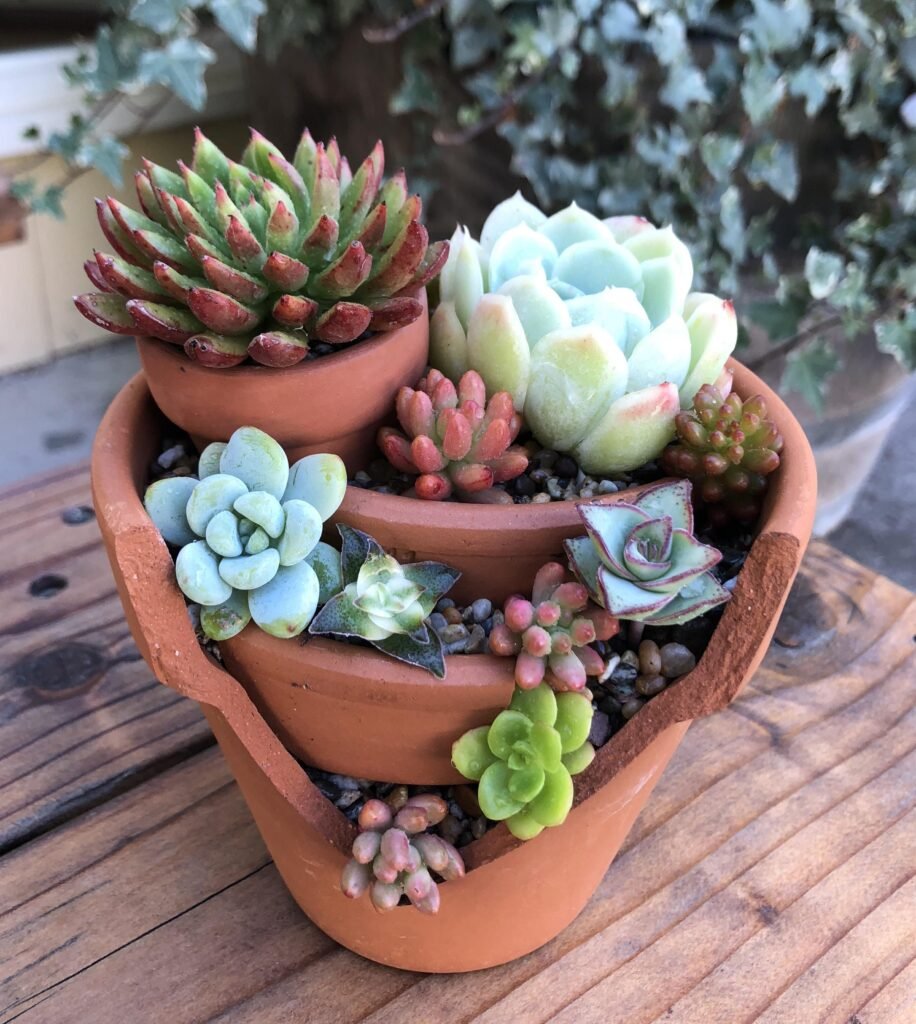
Don’t throw out chipped cups or old teapots. With the right soil and a little charm, they make ideal succulent homes.
5. Wooden Drawers or Crates
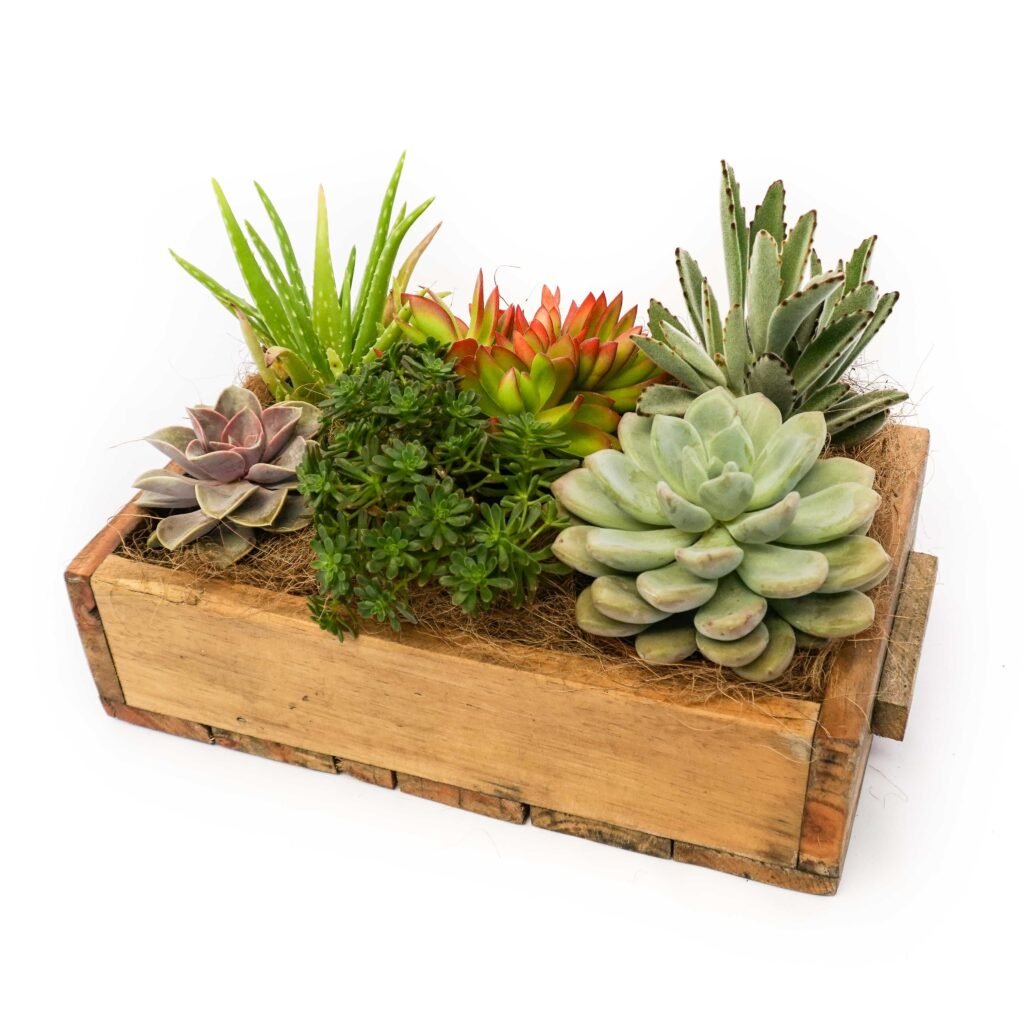
Line them with landscape fabric and fill with your favorite succulents for a rustic garden feature.
These options not only keep waste out of the landfill but also give your succulent setup a story and personal flair.
Getting Involved: Community and Eco-Conscious Gardening
Being eco-friendly with your succulents isn’t just a solo journey—it can be deeply rooted in community and education. Here’s how to take your green goals to the next level.
Swap Instead of Shop
Attend local succulent swaps or plant exchange events. They’re a fantastic way to:
- Trade extra cuttings
- Find rare varieties without buying new
- Meet fellow eco-minded gardeners
It builds community and keeps consumerism in check.
Join or Start a Local Gardening Club
Many cities have urban gardening clubs or community garden groups. Even if they focus on vegetables or flowers, you can bring a succulent twist and share knowledge on sustainable practices.
Workshops & Education
Host a small workshop with friends or community members on eco-friendly succulent planting techniques, DIY pot-making, or organic pest control. Educating others multiplies your environmental impact.
Supporting Ethical and Sustainable Nurseries
Another meaningful way to support eco-conscious succulent gardening is by choosing where you buy your plants and supplies carefully.
Look for nurseries that:
- Grow plants locally without chemicals
- Offer organic or sustainably harvested soils
- Use biodegradable or recyclable packaging
- Support fair labor and local jobs
Whenever possible, avoid big-box garden centers that rely heavily on plastic and shipping from far distances.
Creating an Eco-Friendly Indoor Succulent Setup
Not all succulents live outdoors—many thrive in apartments and office spaces. But indoor gardening comes with its own eco-friendly practices.
Use Natural Lighting
Place your succulents near a bright window or skylight rather than relying on artificial grow lights. This saves energy and mimics natural conditions.
Group Succulents for Shared Humidity
Placing multiple plants together creates a microclimate, reducing the need for frequent misting and stabilizing indoor humidity.
Limit Plastics
Use ceramic pots, recycled glass containers, or eco-friendly composite planters over plastic ones. If you already own plastic pots, reuse them rather than throwing them away.
Common Mistakes to Avoid in Eco-Friendly Succulent Gardening
Even with the best intentions, it’s easy to make a few missteps. Avoiding these will help keep your succulents thriving and your gardening practices truly sustainable.
Overwatering in Non-Drainage Pots
Eco-friendly planters like jars or reused containers often don’t have drainage. It’s essential to add gravel layers or charcoal at the base and water sparingly to avoid rot.
Using the Wrong Soil Mix
Standard potting soil holds too much moisture. Always opt for a fast-draining cactus-specific mix or make your own with sand, pumice, and compost.
Buying Instead of Propagating
One of the greenest things you can do is propagate from your existing plants or trade with others. Buying more plants increases your carbon footprint—especially if they’re shipped.
Relying Too Much on Decorative Plastic
While tempting, plastic planters, faux succulents, or plastic mulch go against the grain of sustainable gardening. Whenever possible, opt for natural, compostable, or upcycled alternatives.
Beginner Tips for Eco-Conscious Succulent Lovers
Starting out? Here’s how to grow your love of succulents while treading lightly on the planet.
Start Small and Local
Pick a few easy-care varieties like Aloe, Jade Plant, or Echeveria that are widely available and hardy. Check out local markets or neighborhood cuttings before heading to big stores.
Track Your Watering
Keep a simple journal or calendar to avoid overwatering—a common beginner mistake. This also helps reduce water waste.
Make Use of Natural Materials
Rocks, driftwood, bark, seashells, and broken tile pieces make wonderful organic decorations for succulent displays and require no extra energy to produce.
Experiment with Propagation
Whether it’s from leaves, offsets, or stem cuttings, propagation is fun, free, and eco-friendly. It’s also a fantastic way to build a thriving collection without extra resources.
FAQs About Eco-Friendly Succulent Gardening
Can succulents really survive in reused containers without drainage?
Yes, they can—as long as you add a proper gravel or charcoal base, use the right soil, and water cautiously. Glass jars, tin cans, and even ceramic bowls can make excellent sustainable homes.
Is using decorative gravel bad for the environment?
Not necessarily. Opt for locally sourced or natural stone materials rather than dyed or imported gravels. Better yet, reuse materials from construction leftovers or thrift stores.
What’s the best organic fertilizer for succulents?
Look for gentle, slow-release, organic cactus fertilizers or diluted compost tea. These improve soil health without synthetic chemicals that may harm soil microbes or leach into water systems.
How can I reduce waste in my succulent care routine?
Use reusable tools, compost old soil, and repurpose plastic nursery pots instead of discarding them. Also, try to buy less and swap more.
Can I make my own succulent soil mix?
Absolutely! Mix 2 parts sand or pumice, 2 parts organic compost, and 1 part coco coir or shredded bark for a breathable, sustainable option.
Final Thoughts
Eco-friendly succulent gardening is more than a hobby—it’s a gentle and joyful way to care for the planet, connect with nature, and cultivate beauty. Whether you’re turning old teacups into tiny gardens or propagating your first echeveria from a fallen leaf, every choice makes a difference.
By choosing sustainable materials, reducing waste, and thinking creatively, your succulent garden becomes a personal expression of care—for your plants and the Earth.
So go ahead—reuse, replant, and revive. The world (and your windowsill) will thank you for it.
